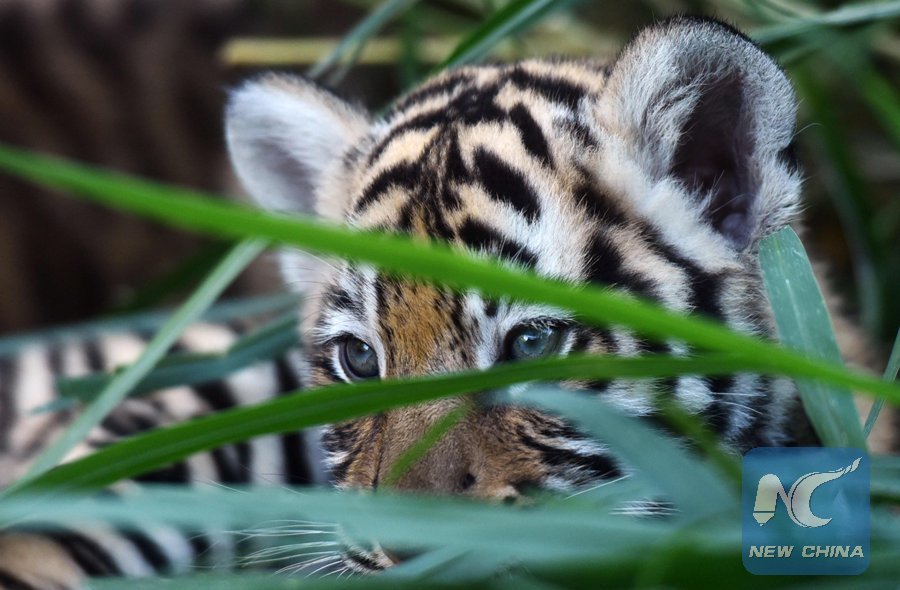
A 45-day-old bengal tiger cub (Panthera Tigris Tigris), is pictured at the Wild Shelter Foundation (FURESA) in Jayaque, 40 kilometres west of San Salvador, on Jan. 31, 2017. (AFP Photo)
WASHINGTON, Oct. 25 (Xinhua) -- An international team led by Chinese researchers analyzed the complete genomes of 32 representative tiger specimens and confirmed that tigers indeed fall into six genetically distinct groups.
These six subspecies include the Bengal tiger, Amur tiger, South China tiger, Sumatran tiger, Indochinese tiger, and Malayan tiger, according to the study published on Thursday in the journal Current Biology.
Fewer than 4,000 free-ranging tigers remain in the wild. Efforts to protect these remaining tigers have also been stymied by uncertainty about whether they represent six, five or only two subspecies.
"This study is the first to reveal the tiger's natural history from a whole-genomic perspective. It provides robust, genome-wide evidence for the origin and evolution of this charismatic megafauna species," said the paper's senior author Luo Shujin with Peking University.
Luo's team and colleagues from Russia and the United States realized that genome-wide screening was also the only way to look for signals that distinct groups of tigers have undergone natural selection to adapt to the environments of the distinct geographic regions they inhabit.
Fossil evidence showed that tigers go back two to three million years, but the genomic evidence revealed that all living tigers only traced back to a time about 110,000 years ago, when tigers suffered a historic population bottleneck, according to the study.
The genomic evidence also showed that there was very little gene flow among tiger populations.
Despite the tiger's low genetic diversity, the pattern across groups is highly structured, offering evidence that these subspecies each have a unique evolutionary history.
The researchers said that's quite unique among the big cats since several other species, such as the jaguar, have shown much more evidence of intermixing across whole continents.
Tiger subspecies have distinct features, according to the study. For example, Amur tigers are large with pale orange fur, while Sumatran tigers in the Sunda Islands tend to be smaller with darker, thickly striped fur.
"In the end, we were quite amazed that, by performing a stepwise genome-wide scan, seven regions including 14 genes stood out as the potential regions subject for selection," said Luo.
The strongest signal of selection they found was in the Sumatran tiger, across a genomic region that contains the body-size-related ADH7 gene.
The researchers suggested that the Sumatran tiger might have been selected for smaller size to reduce its energy demands, allowing it to survive on the island's smaller prey animals, such as wild pigs and muntjac, a small deer.
"Tigers are not all alike," said Luo. "Tigers from Russia are evolutionarily distinct from those from India. Even tigers from Malaysia and Indonesia are different."
However, the origin of the South China tiger remained unresolved since only one specimen from captivity was used in this study since this subspecies has gone extinct in the wild.
The researchers plan to study old specimens with known origin from all over China to fill in the missing pieces of living tigers' evolutionary history.
They're also retrieving genomic information from historical specimens, including those representing the extinct Caspian, Javan, and Bali tigers.

